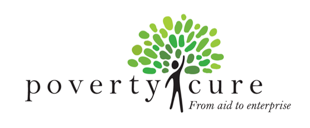SMEs: Wealth Creators under Systemic Threat
Over the past 100 years the world has seen unprecedented economic growth, driven in large part by competition and free markets. A key component of this growth process has been small and medium enterprises (SMEs). But for such companies to work properly, a free and competitive market is required, a market where SMEs can thrive through innovation and growth. Unfortunately, this segment is under duress from forces inside and outside of the developing world.
In many emerging economies, small and medium enterprises suffer from political corruption, the chronic absence of the rule of law, massive overregulation, a relativist ethos where any outcome can be justified after the fact, and a focus on short-term return-on-investment that threatens prudent long-term strategies.
Trade and Aid Barriers to SMEs
These problems are further exacerbated in many developing countries by natural resource wealth and inflows of foreign aid, both of which tend to redirect creative energy away from the wealth-creating activities typical of small and medium enterprises. Finally, our economic aid and donations often distort emerging markets to the point where local SMEs are practically shut out from competing and growing. Our helping ends up hurting.
SMEs in developing countries also are hampered by artificial barriers to international networks of productivity and exchange (protectionism in various forms). While most nations officially subscribe to the free market system, they nonetheless pursue protectionist policies. For instance, as Tan and Griffiths have also noted, Europe has been subsidizing its agriculture to the tune of some $35-40 billion per year, even while it demands that other nations liberalize their markets to foreign competition. The dairy subsidy in the EU has been as much as $2.50 per cow per day. Meanwhile, in 2002 a U.S. farm bill introduced a 10 year, $190 billion dollar subsidy to its farms, this in spite of the fact that, as research by Brian Riedl has shown, the vast majority of U.S. farm subsidy money goes to large agribusinesses, not to small family farms.
Additionally, foreign aid usually comes with strings attached, strings that further tilt the playing field in favor of industries in the donor countries to the detriment of emerging industries in the recipient countries, thus reinforcing a neo-colonial system of dependency.
All of this not only wastes taxpayer money, it hurts poor farmers around the world who might otherwise be able to develop their farms into thriving small and medium export businesses by switching from subsistence crops to cash export crops, crops that would allow them to create greater wealth for themselves and their families.
The current system dampens overall wealth creation and leaves only the politically well-connected minority in the rich and poor countries better off economically, with the rest of us footing the bill. Economist Peter Bauer famously caricatured the matter by defining foreign aid as “an excellent method for transferring money from poor people in rich countries to rich people in poor countries.
SMEs and Microenterprise
Although microenterprise has been hailed as a panacea for poverty in the developing world for several years, and while it can be an effective development tool under the right circumstances, the greatest development opportunities rest with cultivating a climate conducive to small and medium enterprises. This is important to emphasize because often microenterprises and big multinational corporations can get financing while the most promising link in the development chain—small and medium enterprises—go begging.
According to SEAF (Small Enterprise Investment Funds), SMEs often hire and train low-skilled workers, pay well and promote from within. On average, one emerging market SME supports 331 local businesses, and a dollar invested in an SME creates $10 for an emerging economy—a multiplier effect far beyond that found with either microenterprise investment or investment in large multinational corporations.
Encouraging Small and Medium Enterprises
Such data suggests that more energy needs to be focused on encouraging the success and growth of SMEs in the developing world. This could happen by encouraging and pursuing change on several fronts:
- Cultivate access to networks of productivity and exchange by deregulating the SME sector and lowering barriers to trade. (Deregulation, if it ever happens, is usually focused on multination corporations, not the SMEs.)
- Stop punishing rational risk-taking and strive to celebrate innovation and initiative instead of rewarding dependency and the status quo.
- Look for informed methods of increasing access to growth capital for SMEs. (Here, as in so many aspects of development, local knowledge is essential to avoid waste and the unintentional subsidizing of corruption.)
- Teach virtue and character instead of watered down ethics courses, and maintain a high view of the role of the Gospel in transforming culture for the better.


